Handwriting is more than just putting pen to paper – it’s a way to boost creativity, memory, and focus. Whether you’re journaling, planning, or simply writing notes, better handwriting can make your daily tasks more enjoyable and productive.
With the right tools and consistent practice, you can elevate your handwriting while enjoying its mental and organizational benefits.
The right tools can make a big difference in your handwriting.
Picking the right pen for the job is key. Here are some great options:
| Pen Type | Ideal For | Features |
|---|---|---|
| Uni Pin Fine Liners | Detailed work | Waterproof, smudge-proof, thin tips |
| Posca Paint Pens | Dark papers | Bold colors, excellent coverage |
| Platinum Carbon Ink Fountain Pen | Everyday writing | Smooth ink flow, consistent lines |
| Micron Pens | Doodle art | Precise lines, archival quality |
| Faber Castell PITT | Artistic lettering | Fade-resistant, professional-grade |
Once you’ve found the right pen, pair it with high-quality paper to further improve your writing experience.
Good paper matters. Look for a smooth satin finish, proper ink resistance, and a weight of at least 90gsm. If you’re left-handed, slightly more absorbent paper can help prevent smudging. On the other hand, those using extra-fine nibs might prefer less absorbent paper for cleaner lines. A smooth surface also works well when practicing with guide sheets.
Kim from Tiny Ray of Sunshine offers handwriting templates with features like 5mm spacing, dashed horizontal lines, vertical guides, and diagonal lines for cursive practice.
To use, place the guide sheet under your paper. This helps you create neat, consistent letters. For best results, use paper with a weight of 90gsm or more so the guidelines are visible but don’t overpower the page.
Lastly, store your pens properly to keep the ink flowing and extend their life .
Hold your pen lightly between your thumb and index finger, about one-third of the way from the tip. Let your middle finger provide support underneath. This grip gives you control while reducing hand strain.
| Element | Correct Position | Common Mistakes |
|---|---|---|
| Fingers | Tripod grip | Gripping too tightly |
| Hand Position | Rest pinky and heel on page | Keeping hand floating |
| Arm Movement | Use shoulder and arm | Relying on fingers only |
| Body Posture | Straight back, flat feet | Slouching or hunching |
A proper grip is the starting point for improving your handwriting technique.
Once your grip is in place, focus on mastering basic writing movements to gain better control.
Practice these essential strokes: vertical, horizontal, circular, cross, forward slash, square, backward slash, X, and triangle. Repeating these with any tool helps develop muscle memory.
"The space within the letters should be similar to the space between the letters." – Martina Flor
Activities like tracing shapes in sand or using salt trays can further enhance your tactile awareness and reinforce muscle memory .
After getting comfortable with basic strokes, shift your attention to spacing and angles for a cleaner, more consistent look.
Work on four types of letter pairings: straight-to-straight, straight-to-curve, curve-to-straight, and curve-to-curve. Rounded letters (a, c, d, g, q) need a bit more space, while open letters (c, e, r, s, t) should maintain even spacing .
Using dot grid or graph paper can help you keep letter height and weight uniform. While traditional calligraphy styles like Copperplate (55 degrees) and Spencerian (52 degrees) suggest specific angles , find one that feels comfortable and stick with it.
For a fresh perspective, occasionally look at your work upside down to spot uneven spacing or slant issues .
Once you’ve mastered the basics of handwriting, experimenting with different styles can make your journaling more engaging and personal.
Cursive writing links letters seamlessly, giving your handwriting a polished and unique look. Start by practicing lowercase letters, keeping a consistent slant, and focusing on smooth connections between characters. For structured guidance, the Consistent Cursive online course provides 5.5 hours of lessons, covering everything from the basics to advanced techniques .
| Writing Element | Benefits of Cursive | Ideal For |
|---|---|---|
| Speed | Enables quicker writing once learned | Long journal entries |
| Expression | Adds a personal, elegant touch | Emotional reflections |
| Flow | Natural letter connections | Creative writing |
| Learning Curve | Requires regular practice | Daily journaling |
If readability is more important to you, printed letters might be a better fit.
Printed letters prioritize clarity, making them ideal for notes or entries you’ll reference later. Jamie Todd Rubin points out that while cursive is faster, printed letters are easier to read . To perfect this style, focus on keeping letter heights uniform, maintaining even spacing, and applying consistent pressure for neat, structured writing.
Decorative touches can make your journal visually appealing and more organized. According to @TheJournalCorner, a member of the Archer and Olive Ambassador Team, washi tape and stickers are both functional and decorative . Try incorporating simple elements like:
For example, an Archer and Olive Bullet Journal user creatively shaped washi tape into tape rolls, showing how basic materials can produce eye-catching results .
Improving handwriting takes regular effort, but it’s achievable with consistent practice. Whether you’re journaling or planning, dedicating time to refine your writing can make a noticeable difference. Here’s how to make it part of your daily routine.
Start with the basics by focusing on individual letter strokes. This builds a strong foundation for better handwriting.
"Handwriting is muscle memory, and if you’re unhappy with the way you write, chances are high that you need to adjust and/or retrain your hand in order to produce different strokes, particularly if you’ve been writing the same way for 20, 30, 40+ years."
Once you’re comfortable with individual letters, move on to forming whole words.
Take your skills further by practicing frequently used words. This step helps you connect letters smoothly and maintain consistency.
"Slowing down means noticing the movement of the pen and ink. I am listening to the sound of the pen or marker on the paper. It’s very tactile!"
Journaling offers a perfect opportunity to refine your handwriting while also reflecting on your day or setting goals.
"If you slow down, you become more mindful of putting pen to paper, hence paying closer attention to achieving consistency in letter forms, so that, for example, every letter ‘D’ is written the same way every time. There is also no substitute for practice, whether it be as formal as handwritten drills or just writing that daily to do list."
Here are some practical ways to integrate handwriting practice into your journaling routine:
These techniques can help you turn handwriting practice into a natural part of your daily life.
Take your handwritten journal to the next level by improving your penmanship and incorporating decorative elements. With the right supplies and techniques, you can make your journal both visually appealing and functional.

Once you’ve polished your handwriting and added decorative touches, consider using specific tools to enhance your journal further. Dark Moon Paper offers sticker kits that not only complement your handwriting but also help organize your journal pages. Their February 2025 collection includes options for both functionality and style:
To make the most of these stickers:
Washi tape and decorative papers are great for framing your content without harming your journal pages. High-quality washi tape can be repositioned easily, making it versatile for different designs .
| Element Type | Best Uses | Price Range |
|---|---|---|
| Wildflowers Washi Set | Page borders, tabs | $11.99/3-pack |
| Classic Washi Set | Section dividers | $11.99/3-pack |
| Japanese Kinwashi Paper | Special entries, covers | $6.51/sheet |
| Katazome Paper | Background accents | $18.00/sheet |
These embellishments pair perfectly with your improved handwriting, allowing you to showcase your personal style.
After customizing your journal with physical elements, you can expand your creativity by blending analog and digital tools. This combination lets you enjoy the best of both worlds.
"Handwriting in digital journaling is not about replacing one method with another; it’s about harnessing the unique strengths of each to create a more holistic and effective approach to note-taking" .
Here are some practical ways to integrate analog and digital journaling:
Set aside 10–15 minutes each day to work on your handwriting. This small commitment can make a big difference over time . Pay attention to your posture and hold your pen with a relaxed grip to avoid hand strain and create smoother, more consistent letters.
Here’s a quick breakdown of areas to focus on:
| Focus Area | Practice Method | What to Expect |
|---|---|---|
| Letter Formation | Practice the alphabet daily | More uniform characters |
| Writing Flow | Use slow, steady strokes | Better readability |
| Tool Selection | Try different pens | A more comfortable feel |
| Practice Time | Dedicate 10–15 minutes | Gradual, steady progress |
Stick to these basics to reinforce the techniques we’ve covered. They’ll help you build a solid routine for improving your handwriting.
You can begin improving your handwriting today with these simple strategies. For precise control, try the Muji 0.38 mm pen . If you’re using dark paper, the Sakura Gelly Roll white pen works great for smooth, clear writing.
Incorporate practice into your daily routine with these ideas:
Morning:
Evening:
With consistent practice, you’ll not only enhance your handwriting but also make everyday writing tasks more enjoyable.
Stickers Made for Planning
Our custom stickers are a fuss-free way to brighten up your planner pages with perfectly-sized designs that add a spark of personality to every layout.
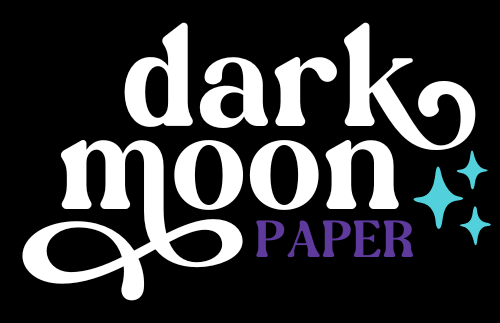
Why use planner stickers?
Planner stickers make organizing easy, fun, and personal! Add color, creativity, and structure to every page, transforming your planner into a tool that reflects you. Perfect for tracking, decorating, and staying inspired daily!
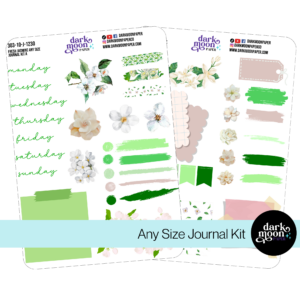
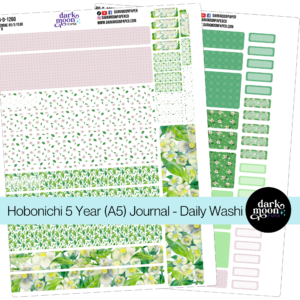
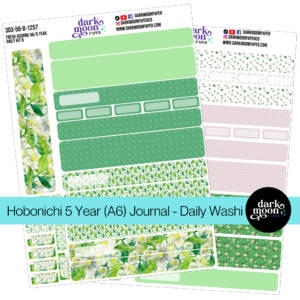
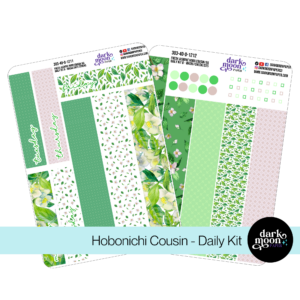

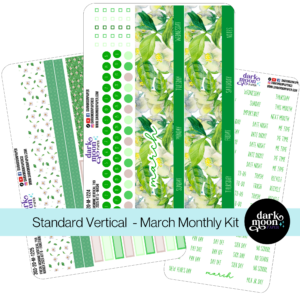

Hello and welcome!
I’m Rachael Snow, a lifelong artist and entrepreneur, and I started Dark Moon Paper to blend my love of art, technology, and the mysterious beauty of the world around us. My sticker kits are meant to set the mood, tell a story, and give you a little escape from the ordinary.
I work from my cozy studio tucked away in the beautiful woods of Oregon, surrounded by nature and a dark night sky full of stars.